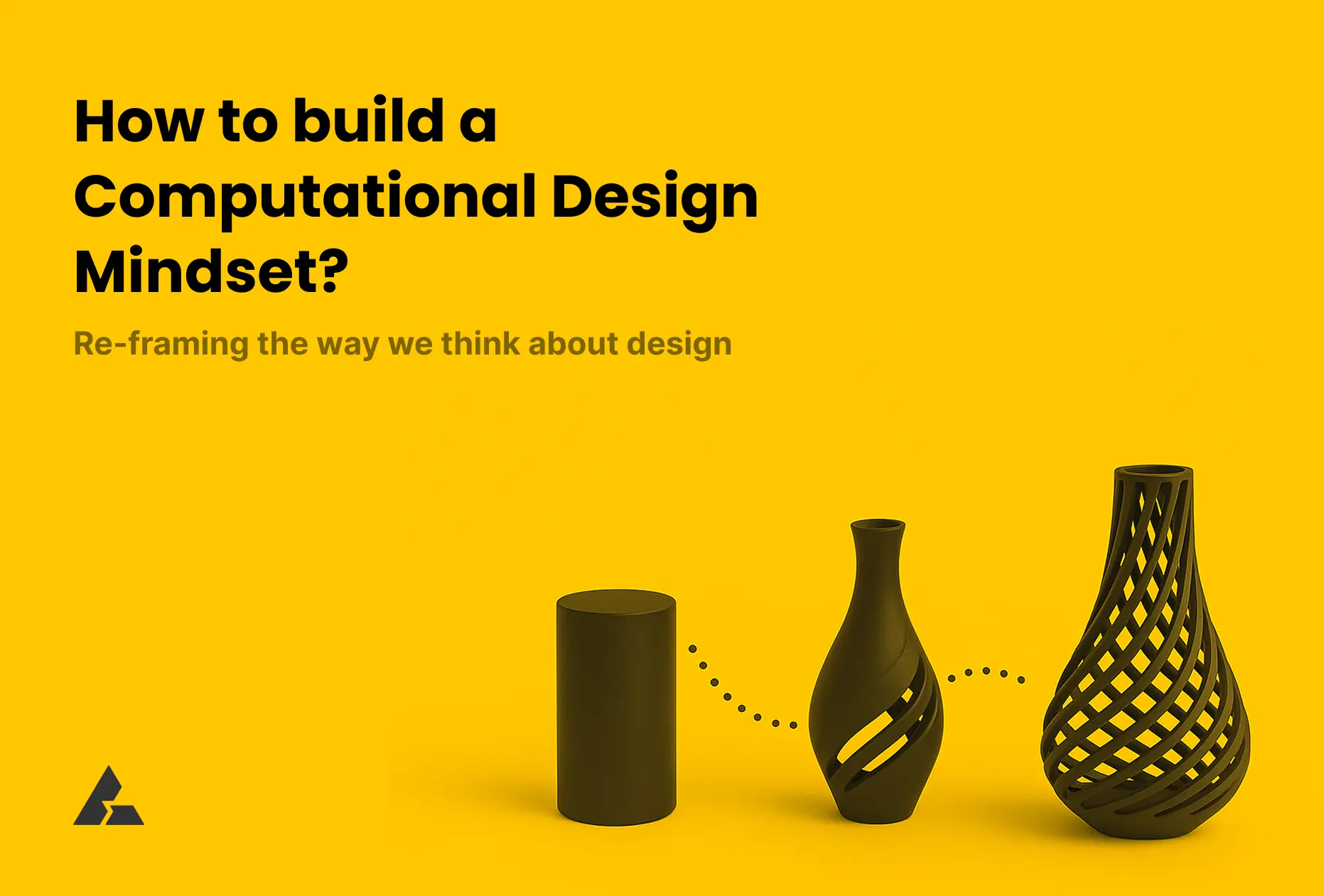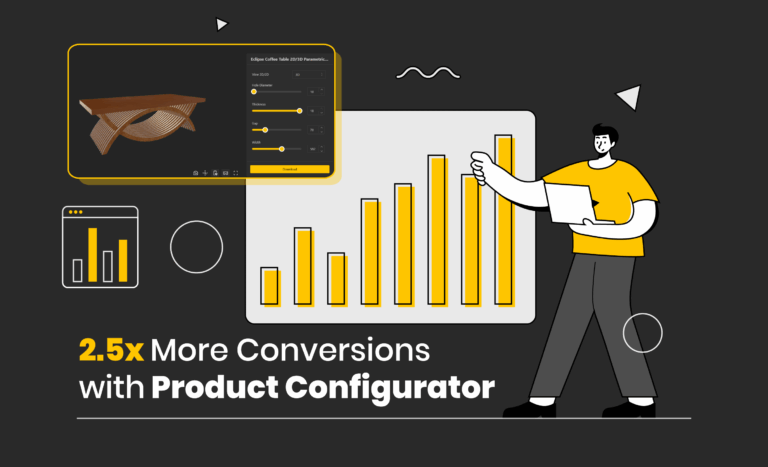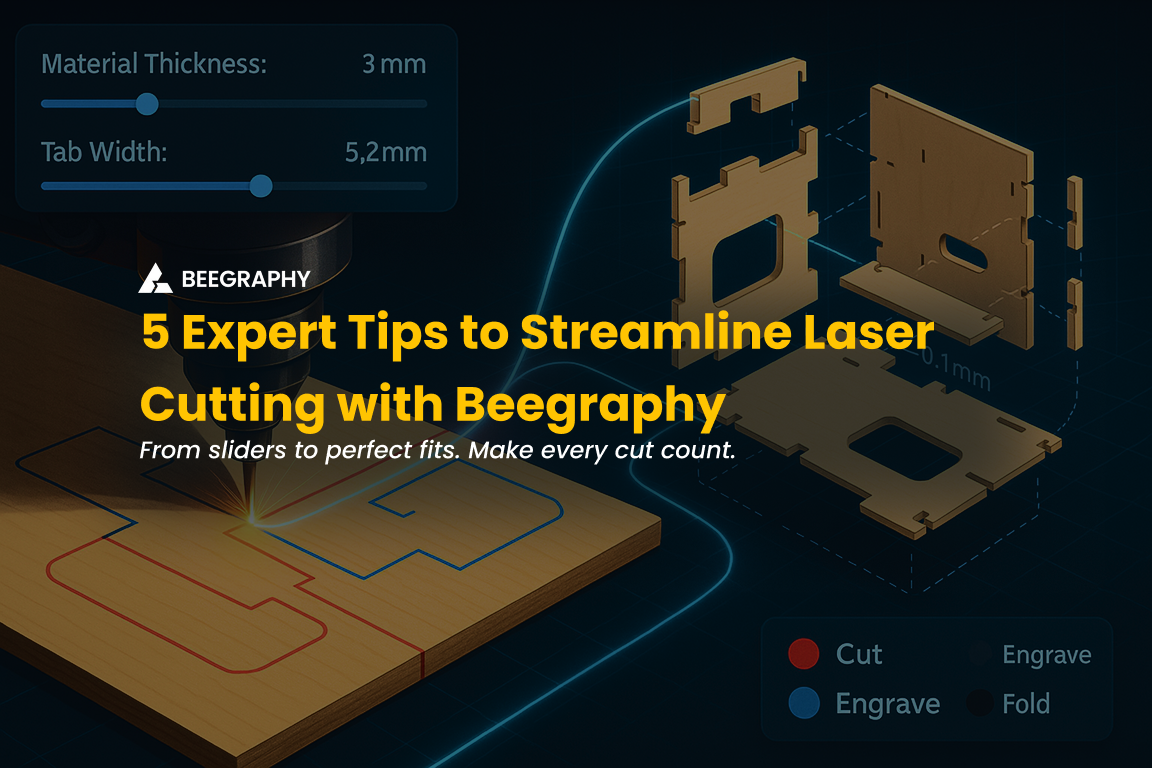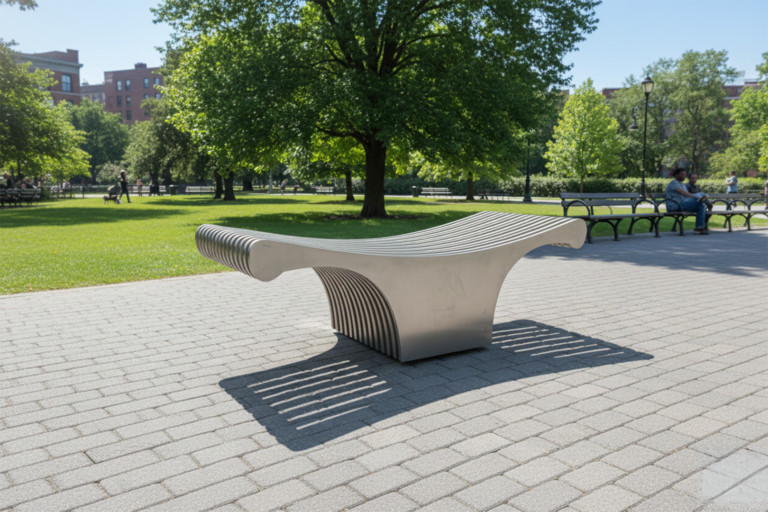Table of Contents
I still remember the moment everything changed. After more than a decade working across architecture and product design, I considered myself fluent in modeling workflows. From Rhino to Revit, I could produce complex geometry, generate iterations, and manage parametric families with confidence.
Then I opened a node-based environment, specifically Grasshopper, for the first time.
There was no canvas to sketch on, no extrusion tool to reach for. Just a grid, a set of components, and an empty space asking me not what I wanted to draw, but how I wanted it to behave.
That’s when I realized: computational design doesn’t begin with form. It begins with logic.
“Computational design represents a fundamental shift in our creative process. We no longer just draw what we imagine; we write the rules that generate what we never could have imagined.” — Patrick Schumacher, Principal of Zaha Hadid Architects
Instead of shaping geometry directly, you define rules: parameter-driven systems that adapt, iterate, and respond. This transition isn’t just technical, it’s conceptual. You move from drawing to defining relationships. From modeling outcomes to designing workflows.
And with that shift come new challenges:
- Geometry becomes a result of logic, not intuition
- Failures are more abstract: your model might not break visually, but the logic behind it could be unsound
- Design becomes more transparent, with each decision part of a visible system others can evaluate or edit
This article explores how to build the mindset needed to navigate that shift: from form-focused to logic-first thinking. Whether you’re just starting with parametric design tools or looking to strengthen your computational approach, the goal is to design with intent, adaptability, and clarity.

This image highlights the traditional interface of SketchUp, a classic tool in 3D modeling and design, showing a detailed 3D living room model and scene management features. Source: Desktop Architect SketchUp Review
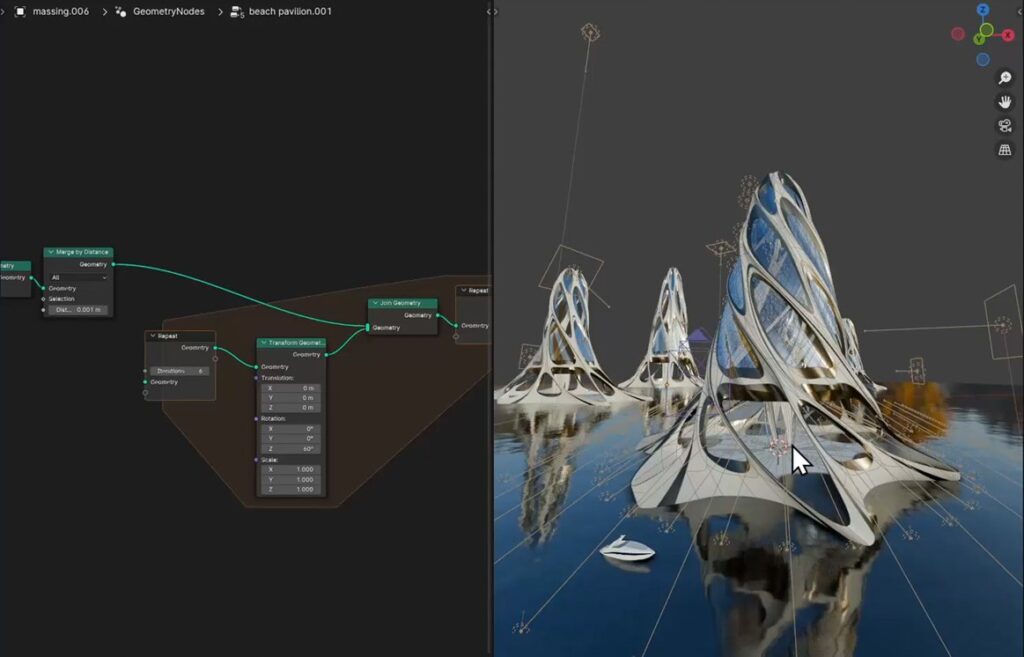
This image showcases a modern computational design workflow in Blender, featuring the use of Geometry Nodes to procedurally generate complex, futuristic pavilion structures. Source: Parametric Architecture – Architectural Journey from Maya to Blender
From “What” to “Why”: How Computational Design Shifts Focus
Remember designing a chair in traditional CAD software? You’d start by sketching the form, then refining the curves until it looked right.
Computational design flips this process completely.
Instead of beginning with a shape, you start with relationships: “The seat height should adjust based on the user’s height,” or “The leg thickness should increase proportionally with the weight it needs to support.” The form emerges as a result of these rules.
My first experience with my fascination for computational design started when I had just finished my graduation. I visited a nearby mall and found a furniture store with varieties of furniture. I started exploring and found some brilliant options, but as I was leaving the store – oh my god! – I found this unique lamp used for object lighting for a sofa and I was completely fascinated by its design! It had these series of thin vertical strips arranged around a circular base, with their lengths gradually changing to create this smooth, spiraling shape. The soft light was passing through these shapes, and it created such a beautiful shadow pattern! The design was so simple yet so effective.
I had no idea back then that the design process for this lamp was based on computational design! Years later, when I started practicing Architecture, I came across different design methods and finally discovered computational design tools. I was so thrilled when I was able to eventually recreate similar geometry! The best part? When I needed a new lamp for my place, I could adjust the parameters and create multiple lamp variations with adjustments in height, depth and everything based on the room type and location. Can you believe it? This was the incredible power of computation – how easily it created multiple variations with just simple changes in these parameters! That moment in the furniture store literally changed how I see design forever!
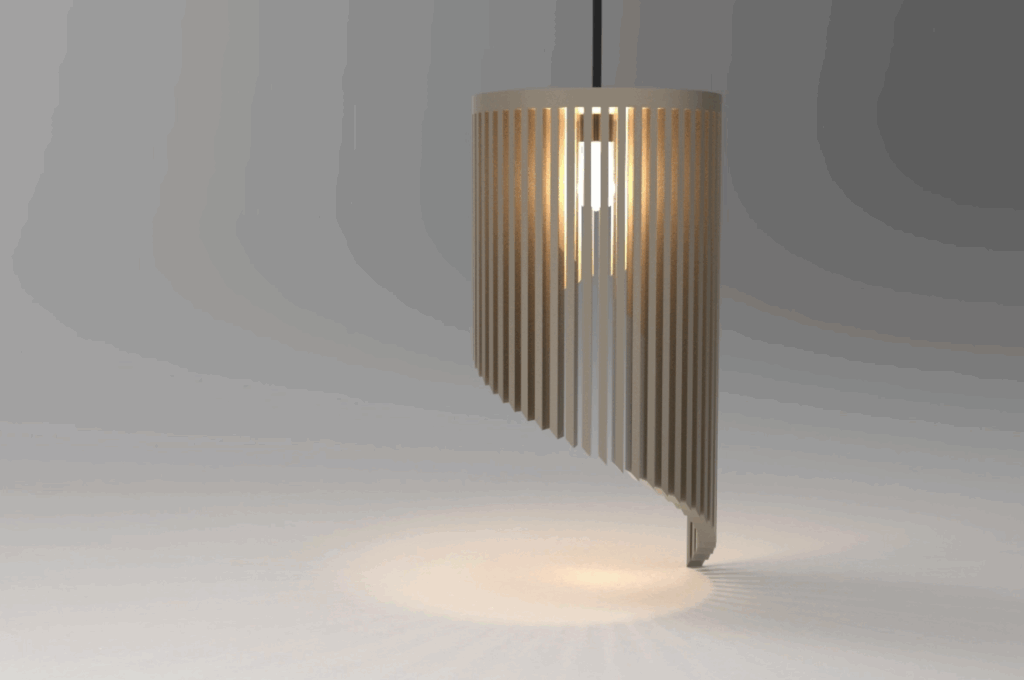
Parametric Spiral Lamp Design – Beegraphy Marketplace
Looking back, I had to learn SO much to recreate that lamp! I learned software, practiced countless hours, and after quite some time was finally able to recreate it. Not saying it wasn’t worth it – the journey was incredible! But in this modern day of AI, we really need a faster approach. Some custom tools that can just adjust designs based on what users actually need.
And guess what? I found an amazing solution at Beegraphy’s marketplace! I was able to find the exact design, and the best part? I could modify it and generate CNC drawings without all that technical knowledge I needed before! I suggested it to some relatives who weren’t very technical, and they achieved the same results – they only needed my help with the CNC printing and assembly parts.
This personal journey made me realize something truly powerful: the same computational design principles that helped me recreate a simple lamp can also scale up to shape entire architectural marvels. From furniture to futuristic pavilions, the logic remains the same: relationships, rules, and smart systems driving design innovation.

Parametric timber structure from the ICD/ITKE Research Pavilion 2015–16, designed using computational methods. Source- ICD/ITKE Research Pavilion 2015–16
The ICD/ITKE Research Pavilion 2015-16 by the University of Stuttgart is such an amazing example of how computational design can create incredible architecture! This beautiful structure shows how the same principles that work for small items like furniture can be scaled up to create entire buildings. What’s so cool is that instead of drawing it by hand, the designers let computers and nature inspire the final form!
What was the story behind it?
I was absolutely amazed when I found out about this! The researchers were looking at sea urchins under microscopes (of all things!) and discovered something incredible about how their spines are structured. These tiny sea creatures build super-strong yet lightweight structures with minimal materials. Nature had already figured out the perfect design – the researchers just had to learn from it!
How was it constructed?
They used robots. Two robots worked together like a perfectly choreographed dance – one held each piece while the other wrapped carbon and glass fibers around it. The whole pavilion has about 151 segments that fit together beautifully. The robots followed patterns created by special computer programs that made sure the structure would be strong enough while using as little material as possible.
What made it special?
The most mind-blowing part? The designers didn’t actually draw the pavilion – they created a system of rules based on sea urchin spines, and the final shape emerged from that system! And even though it’s huge (about 9 meters across), it weighs only 260 kg and can be taken apart and rebuilt somewhere else. How cool is that?!
Why does this matter?
This project shows just how exciting the future of architecture can be! It’s not just about making weird shapes with computers – it’s about creating smart systems that generate beautiful, efficient buildings. Seeing this pavilion made me realize that digital design tools are completely changing what’s possible in architecture, and I find that incredibly exciting!
This mindset applies across industries:
- A product configurator that automatically adjusts a shoe’s sole thickness based on the wearer’s weight
- A building facade that optimizes aperture size based on sunlight analysis
- A lamp that reconfigures its form based on available materials
We are not designing objects, we are designing the behaviors of systems.
— Sean Ahlquist, Architect and Researcher
Developing Computational Thinking: Three Exercises Anyone Can Try
No one develops a computational mindset overnight. Mine developed gradually through changing how I approached problems. Here are three exercises that helped me shift my thinking:
1. Break Down a Routine Task (Decomposition)
Example: Think about how you make your morning coffee or tea.
Instead of just “making coffee,” list every single step:
- Fill the kettle with water
- Boil the water
- Place coffee grounds into a filter
- Pour hot water over grounds
- Wait for brewing
- Pour into a cup
Why it matters:
Decomposition helps you see how big tasks are really just a series of smaller, manageable steps — essential in computational design when creating complex models.
2. Spot Patterns in Daily Activities (Pattern Recognition)
Example: Look at how traffic behaves during your commute.
Notice patterns like:
- Traffic jams happen near schools between 8–9 AM.
- Left turns take longer at certain intersections.
- Some routes are consistently faster.
Why it matters:
Pattern recognition helps you predict behavior, optimize systems, and build smarter algorithms — like designing adaptive layouts that respond to user habits.
3. Create Simple Rules for Repetitive Tasks (Algorithmic Thinking)
Example: Organizing your wardrobe.
You can set simple rules like:
- If a shirt hasn’t been worn in 6 months → donate it.
- If it’s seasonal → pack, it away.
- Otherwise → keep it easily accessible.
Why it matters:
Algorithmic thinking trains you to design clear decision processes, just like how you would automate design parameters or material choices in computational models.
From Theory to Practice: Computational Design in the Real World
Walked through a shoe store recently, I picked up a parametric 3D-printed sneaker — a futuristic shoe made from a single flexible material using advanced computational design. Its midsole, a complex lattice structure that looks almost biological, wasn’t designed in the traditional sense. It was generated through algorithms that optimized cushioning, flexibility, and support based on various design constraints and simulations.

“Parametric 3D-printed sneaker made from a single flexible material, showcasing computational design innovation. Source: Yanko Design
This isn’t just happening in footwear. Computational design is transforming industries:
-
Architecture: Firms like Zaha Hadid Architects use parametric modeling to create buildings that respond to environmental conditions and site constraints.
-
Product Design: Companies like Nervous System create jewelry and home goods using algorithms that simulate natural growth patterns, ensuring each piece is unique.
-
Manufacturing: Tesla uses generative design to optimize parts for their vehicles, reducing weight while maintaining structural integrity.
-
Fashion: Designers like Iris van Herpen use computational tools to create garments with forms impossible to achieve through traditional methods.
As Neri Oxman, founder of the Mediated Matter Group at MIT, puts it:
We are moving from designing form to designing the behavior of form.
The common thread? None of these designs started with sketching a fixed shape. They began with defining relationships, constraints, and behaviors — letting the form emerge from those rules.
Your Learning Roadmap: Resources to Build Your Computational Mindset
When I began this journey, I wished someone had handed me a roadmap. Here’s the one I’ve built through years of practice:
For Visual Learners:
- Parametric Camp (YouTube) : José Luis García del Castillo
- Computational Design: Next 16.0
- Beegraphy Platform: Explore BeeGraphy Editor: Your Gateway to Parametric Modeling]
- Parametric Design with Grasshopper (Udemy) by Sajjad Motazer
In Case of Any Doubts or Queries:
The most powerful skill in computational design isn’t coding—it’s structured thinking.
— Daniel Davis, Senior Researcher
The key isn’t which resource you choose; it’s practicing consistently with a focus on understanding the logic, not just the tools.
The 7-Day Computational Mindset Sprint
Ready to transform how you think about design? Challenge yourself with this seven-day sprint:
Day 1: Observe and Analyze
Download a simple parametric model and identify all its variables and relationships.
Day 2: Constrain and Create
Define three specific constraints, then design something within those limitations.
Day 3: Break and Fix
Intentionally break your model from Day 2, then repair it.
Day 4: Document and Explain
Label every part of your model to explain what it does and why.
Day 5: Share and Gather
Post your model to the BeeGraphy community and ask for specific feedback.
Day 6: Modify and Adapt
Take someone else’s model and adapt it to new constraints.
Day 7: Build from Rules
Create a new design starting only with rules, not with a form in mind.
Each day builds on the previous one, gradually shifting your mindset from form-first to logic-first thinking.
The Designer as Systems Thinker: A New Way Forward
Every computational designer I’ve spoken with remembers their pivotal moment, that instant when everything clicked. For some, it was watching parameters update a design in real-time. For others, it was solving a complex problem through simple rules.
My moment came when I realized I wasn’t just designing objects anymore; I was creating systems that could generate several variations, each responding to different needs and contexts.
Computational design isn’t just another skill to add to your resume. It’s a fundamental shift in how you approach problems, seeing connections rather than forms, relationships rather than shapes, behaviors rather than fixed outcomes.
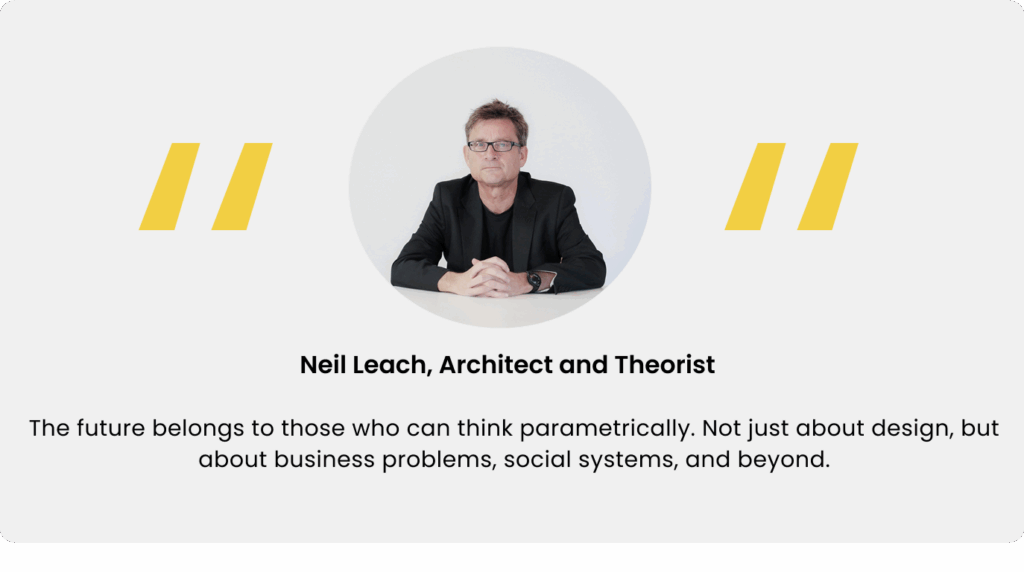
Whether you’re a student, a professional designer, or someone curious about the future of design, remember: computational logic is a language. And like any language, it becomes natural the more you speak it.
Frequently Asked Questions
-
Do I need to know how to code to start with computational design?
Modern parametric tools like BeeGraphy are built to be beginner-friendly. You don’t need to write code to start creating , thanks to its visual programming interface. Users can design by simply connecting pre-defined nodes and components on a canvas. If you’re a beginner, you can start immediately using BeeGraphy’s ready-to-use nodes and templates. If you’re more advanced, you can create your own custom nodes, which may require coding—but it’s entirely optional for most design workflows.
-
Which is better for beginners: Grasshopper, Dynamo, or BeeGraphy?
Each has strengths, but BeeGraphy was specifically designed to flatten the learning curve for beginners. Our browser-based platform requires no installation, includes guided templates, and offers real-time community support.
-
How long does it take to become proficient in computational design?
Most users report feeling comfortable with basic parametric concepts after 2-3 weeks of consistent practice. More advanced skills develop over 3-6 months. Our 7-Day Mindset Sprint accelerates this journey significantly.
-
Can computational design work alongside traditional CAD workflows?
Absolutely! Many designers use both approaches complementarily. BeeGraphy supports imports and exports to common CAD formats, making it easy to integrate with existing workflows.
-
Is computational design only for complex projects?
Not at all. While it excels at complexity, computational thinking often simplifies what appears to be simple. Even basic furniture design benefits from parametric approaches, especially when customization is involved.


